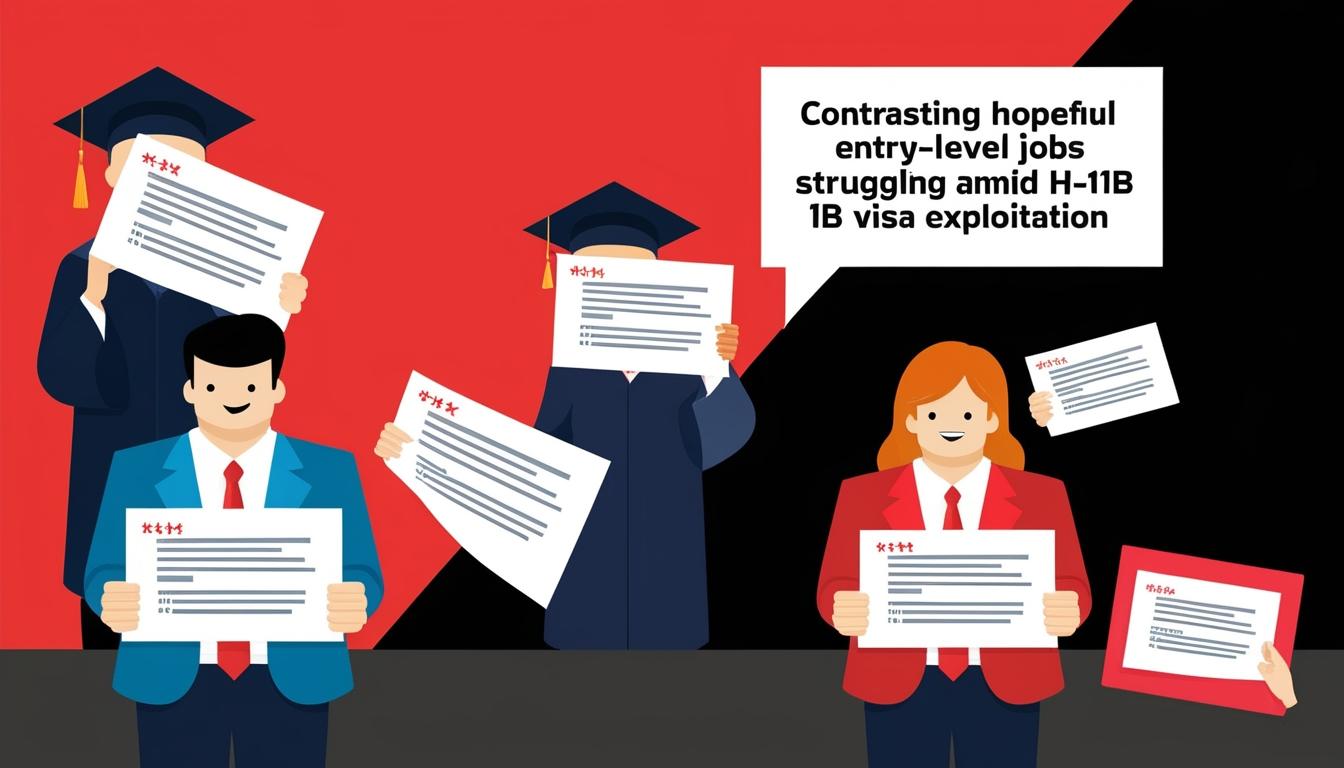The ongoing debate surrounding the H-1B visa programme is drawing attention not only for its intended purpose of attracting skilled foreign professionals but also for its perceived exploitation by employers seeking lower-cost labour for less specialised roles. This misuse of the programme has created an imbalanced job market, particularly affecting young individuals and recent graduates entering the workforce.
The H-1B programme was initially designed to facilitate the entry of specialised talent into the United States; however, it has increasingly become a vehicle for hiring non-specialist workers at lower wages, ultimately distorting job availability for skilled professionals. Current data indicates that the ratio of unemployment for college graduates under 25 in comparison to those over 25 has surged, reaching a stark rate of more than four to one. This alarming statistic illustrates the scarcity of entry-level positions in a job market that has been adversely affected by the improper allocation of H-1B visas to ordinary workers.
Speaking to the issue, a concerned observer outlined their firsthand experience with the shifting landscape of entry-level tech job opportunities. They noted, “I have seen firsthand the symptoms of decreasing demand for entry-level tech jobs... concerned advisees getting fewer offers with lower pay or in some cases not getting any offers at all.” This perspective sheds light on the reality facing new entrants to the job market, where competition for jobs has intensified as entry-level positions become increasingly rare.
The misuse of H-1B visas stems not from the volume of visas issued but from how they are allocated, according to this narrative. There is a significant concern that the application process has been exploited, allowing employers to falsely represent the need for specialists in their workforce. With bureaucratic processes in place, employers can allegedly exaggerate claims, resulting in low-skilled workers being granted visas despite the initial intentions of the programme. The situation has unfurled into what some describe as a "lottery system," making it difficult for genuinely skilled professionals to navigate a system inundated with applications for entry-level roles.
Despite the robust salaries reported in aggregate for H-1B visa recipients, data reveals that many positions do not correspond with the high level of skill one would expect for such remuneration. According to annual reports by the U.S. government's Office of Citizenship and Immigration Services, while nearly 63,000 of the H-1B recipients worked in "Computer-Related Occupations," the median salary stood at $99,000, with a notable 25% earning less than $85,000. These findings raise questions about the distribution of H-1B visas among truly specialised candidates, with concerns emerging regarding the overlap of skilled workers with those vying for less-complicated roles.
Compounding these challenges is the growing influence of artificial intelligence (AI) on the job market. The advancement of AI technologies is particularly affecting entry-level job positions, intensifying the competition for new graduates and exacerbating the existing challenges posed by the H-1B visa misuse. As AI capabilities expand, the demand for roles requiring advanced skills may diminish, leading to an increasing tendency for employers to favour lower-skilled, lower-cost workers—potentially undermining the original intent of recruiting qualified foreign professionals.
Looking ahead, the need for reform in the H-1B visa programme has been suggested to ensure that its utilisation aligns more closely with its intended purpose. Comprehensive the review processes could significantly enhance the chances that genuinely specialised candidates are prioritised while mitigating the unfair competition with domestic workers already in place. Meanwhile, the overarching concern remains the need to address the implications of AI automation, as it continues to reshape the employment landscape in ways that are only beginning to be understood.
With approximately 90% of U.S. tax revenues derived from the income of employed individuals, the ramifications of continued high levels of unemployment and underemployment present a pressing mathematical challenge. Sustained unemployment would precipitate a decrease in tax revenue while simultaneously increasing the public assistance requirements, creating a potentially unsustainable economic scenario.
As the discussion surrounding the H-1B visa programme and the role of AI in the job market evolves, stakeholders are urged to consider the complex interplay between these two significant factors shaping the future of work in the United States.
Source: Noah Wire Services
